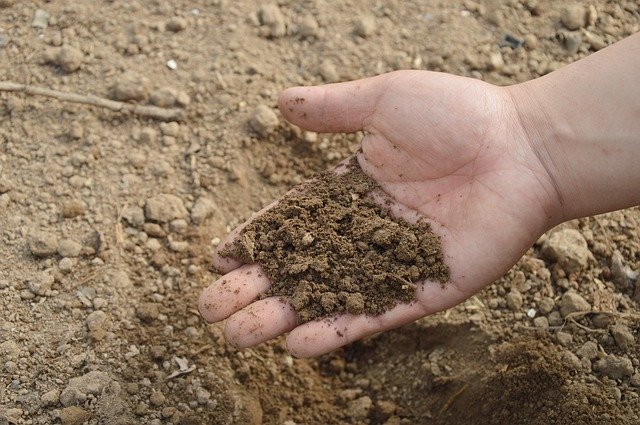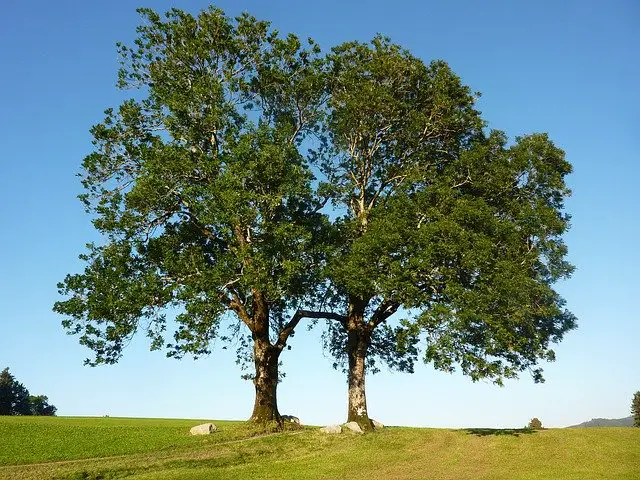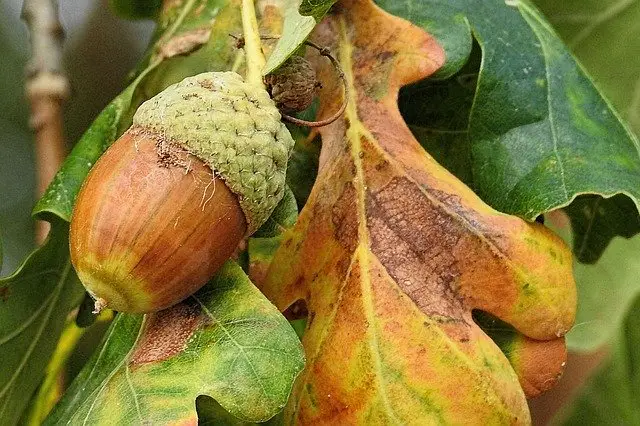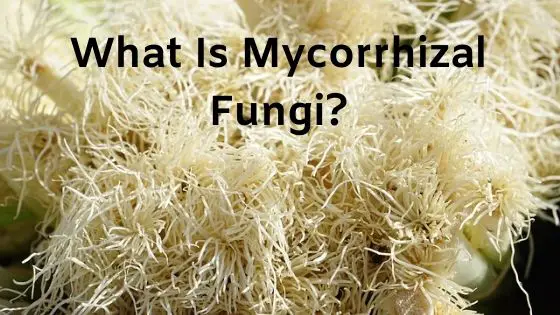Every gardening site or book I pick up lately mentions mycorrhizal fungi and how it is mutually beneficial to plants. But just what is mycorrhizal fungi? And how should it be used?
What Is Mycorrhizal Fungi?
This is an interesting subject and also much easier to understand than to describe. So let’s break it down a bit.
Mycorrhizal Fungi Definition-Biology

According to biologydictionary.net, mycorrhizal fungi translates to “fungus-root” and in most cases the mycorrhizal fungi is either inside the plant roots or attached to them. They have a symbiotic relationship which means they both benefit from being joined together. The fungus helps nutrient and water absorbtion in the plant, and the plant provides food for the fungus through photosythesis.
Not all plants have mycorrhizal fungi attachments but those that do usually grow healthier, stronger plants. And those plants tend to develop faster than those without mycorrhizal fungi. That said there have been cases where fungal attachments to trees have caused the tree to die (more on this later).
How To Use Mycorrhizal Fungi

Mycorrhizal fungi are found naturally in most soils, the problems come when us gardeners start to interfere. We start tilling, over watering, using chemicals, and just compacting the soil by treading on it. All these factors can play a part in the loss of Mycorrhizal fungi.
To replace this vital plant helper, Mycorrhizal fungi can be purchased from garden centres and suppliers. It comes in powder form and should be added to the soil when planting or into the seed growing mix.
There are 2 types of Mycorrhizal fungi available, Endomycorrhizal fungi which is used with over 90% of plant types including vegetables, grasses and ornamental plants. And Ectomycorrhizal fungi which is used mainly for conifers and some deciduous trees. Mycorrhizal fungi is available for purchase in a combination of both types to cover all bases.
How to Inoculate Soil With Mycorrhizal Fungi

If plants are already established, mycorrhizal fungi can be mixed in with water and added to the soil around the plants. This will start to work through the soil and attach to the roots of your plants as they uptake the water.
Homemade Mycorrhizal Fungi

It is possible to make your own mycorrhizal fungi by collecting some soil from established woodlands or hedgerows and growing seeds in a mixture of this and other compost. The trick is to cut all of the plant growth off to fool the fungi into producing spores. To find out more information on how to do this head over to the Forest Garden Wales site.
Mycorrhizal Fungi Meaning

So, in order to understand the meaning of mycorrhizal fungi we need to break it down and deal with each word separately. Mycorrhizal comes from the word mycorrhiza which actually describes the role of the fungus in the root system. Which is known as the rhizosphere.
Neither Plant, Animal, Nor Bacteria
Fungi is the plural of fungus and fungus is a group all of it’s own. Neither plant, bacteria, or animal fungi have been reclassified a number of times.
Why Is Fungus Not A Plant?
All plants, even underwater plants turn sunlight into energy via photosythesis. Fungus only recieve this energy through the host plants’ photosythensis they can’t photosythesise themselves. Also plants have cell walls made of cellulose and fungi have cell walls made from chitin (like some insects).
Why Is Fungus Not An Animal?
Although their genetic ancestery is closely related to animals, fungi have cell walls and animals don’t. Also animals can move around and fungi can’t. Plus animals have sensory organs and fungi don’t.
Why Is Fungus Not Bacteria?
Bacteria have a simple cell structure where as fungi have a much more complex cell structure. The exception to this is yeast which has a simple cell structure but is part of the fungi family.
What Happens When This symbiosis Goes Wrong?
This is a weird phenomenon with disasterous results. The most common case in recent years is Ash Dieback. There have been others but there is plenty of research been done into Ash dieback.

A serious problem for plant growers, timber producers and forests, ash dieback is a notifiable condition. According to the British government, ” Ash dieback is a highly destructive disease of ash trees”.
How Ash dieback affects Ash trees
It’s called dieback because that’s exactly what happens, the trees dieback from the top down. It affects young trees and saplings and causes them to die, and weakens older, more established trees allowing other diseases and viruses to attack.
What Causes Ash Dieback?
Yep, you’ve probably guessed it, the mycorrhizal fungi that usually is beneficial to trees, is actually causing these Ash trees to die. It does it by depriving the trees of water and nutrients, which is why they dieback from the newest growth downwards. The fungi that is responsible for Ash dieback is not native fungi to the British Isles, or even mainland Europe.
This devastating fungus originates in Asia, and has somehow found it’s way into the British ecosystem with disasterous results. After the tree is infected it has to be destroyed to prevent spreading.
Ash dieback is a serious condition caused by a non native fungus, but this fungus is not the same as mycorrhizal fungi because it doesn’t start in the roots. It starts as a growth on the leaves and slowly transports itself into the tree bark. Where it sytsematically starves the tree of water and nutrients.
It’s worth noting that the trees that usually host this particular fungus can live alongside it and survive. However native British trees don’t have any defence against this particular fungus.
Oak Dieback

Just a quick note on the condition known as Oak dieback. This is a totally separate and completely different problem to Ash dieback. Oak dieback is caused by many different factors that combine to cause the problem.
Including viral, climatic, environmental, and other stressors, any of which the established oak tree could withstand singularly. The problem is when they all come at once the tree is overwhelmed and this causes oak dieback.
What Is Mycorrhizal Fungi Summary
This is a naturally occurring fungus that grows symbiotically with upto 90% of the plants grown in our gardens. It takes it’s energy from the roots of the host plant it attaches to and gives the host plant extra water and nutrients. Actual translation of the term mycorrhizal fungi is fungus root.
Because it attaches to the root system (rhizosphere) it gets the name mycorrhizal. Fungi is the plural of fungus. Fungus have their own classification as they are neither plant, animal, or bacteria.
Most times this symbiosis works well, but there are some exceptions, Ash dieback is just one of these. Mycorrhizal fungi can be made, or bought to add to the soil and encourage plant health and growth. For more information on this subject head over to the US government website by clicking here.
Mycorrhizal Fungi FAQs
Mycorrhizal fungi attach to the roots of plants and form a symbiotic relationship swapping energy from the sun from the host plant and giving extra nutrients and water to the host plant.
Mycorrhizae is important in helping the host plant uptake nutrients vital to plant growth. Particularly nitrogen and phospherous. Mycorrhizae also increase the root surface area allowing more water to be absorbed by the host plant.
The 2 main types of mycorrhizal fungi are Ectomycorrhiza which form sybiotic relationships with mainly deciduous trees and conifers, and Arbuscular Mycorrhiza ( endomycorrhiza) which form symbiotic relationships with most other plants.
Mycorrhizal fungi form naturally in healthy soils and then attach themselves to the rhizosphere of up to 90% of plants.
In this mutually beneficial relationship, mycorrhizae benefit the host plants by providing extra root area to absorb more water and they also enhance nutrient uptake.
Plants can survive without mycorrhizae, but they flourish with it. It’s the difference between surviving and living really healthily.
Most plants including trees, shrubs, fruits, vegetables, annuals, biennials, and perennials will benefit from mycorrhizal fungi symbiosis.
As mycorrhizal fungi is available as a powder that is water soluble, it can be applied with a watering can with established plants. A handful of powder can be added to planting holes when planting trees. Or mix some in with potting compost for seeds and cuttings.

